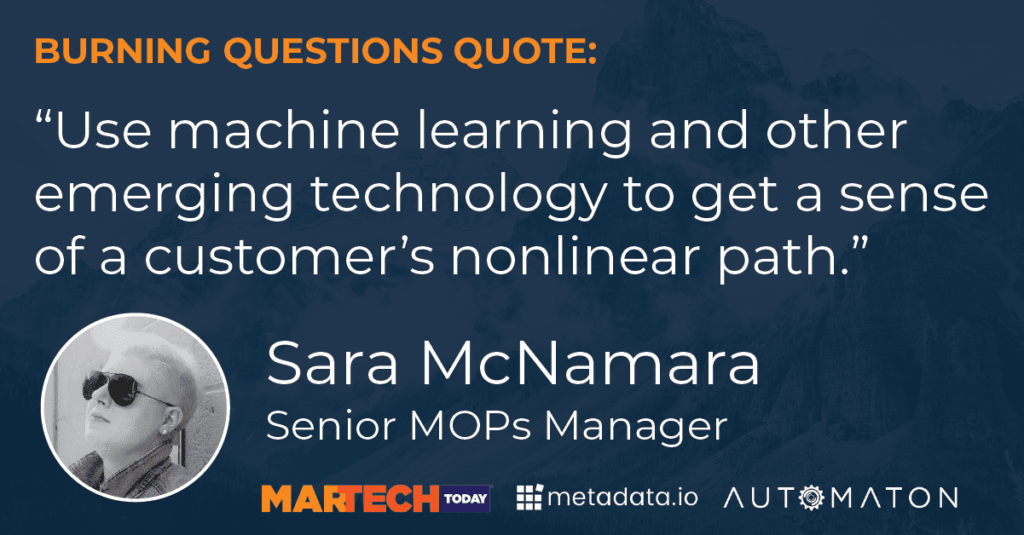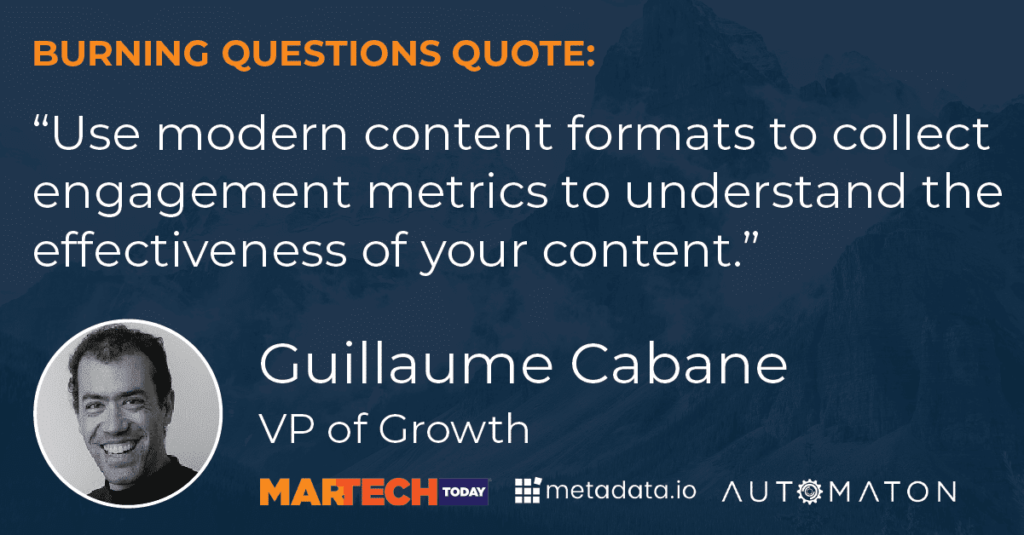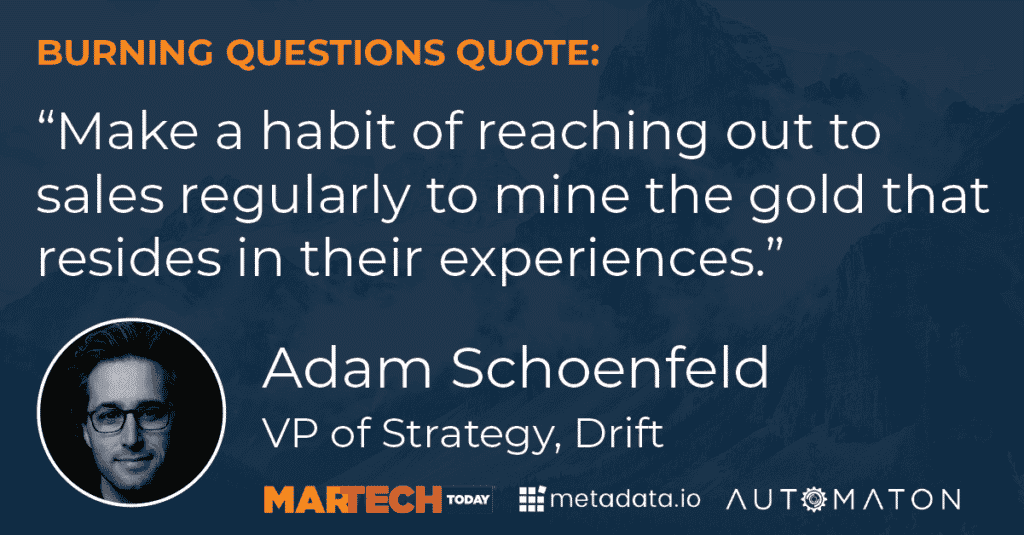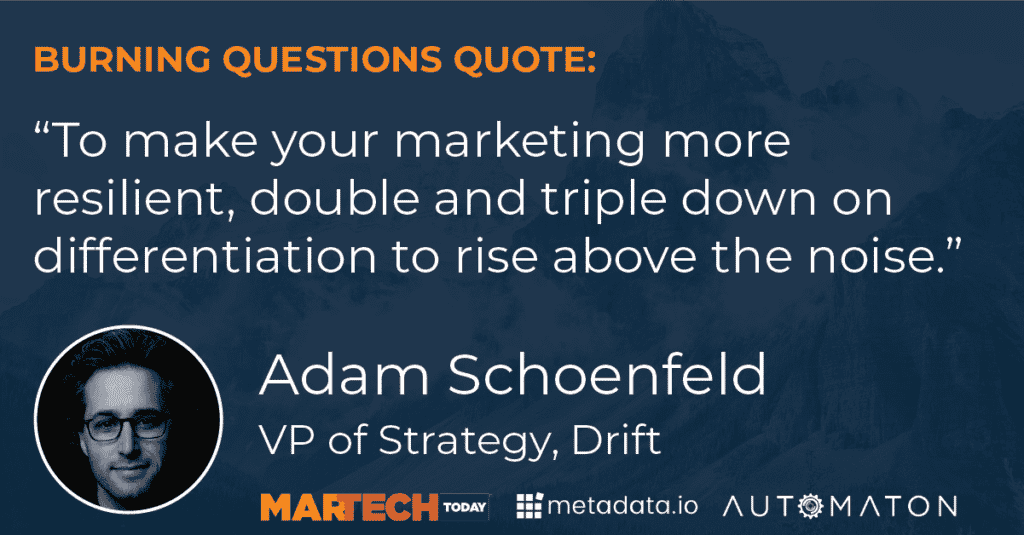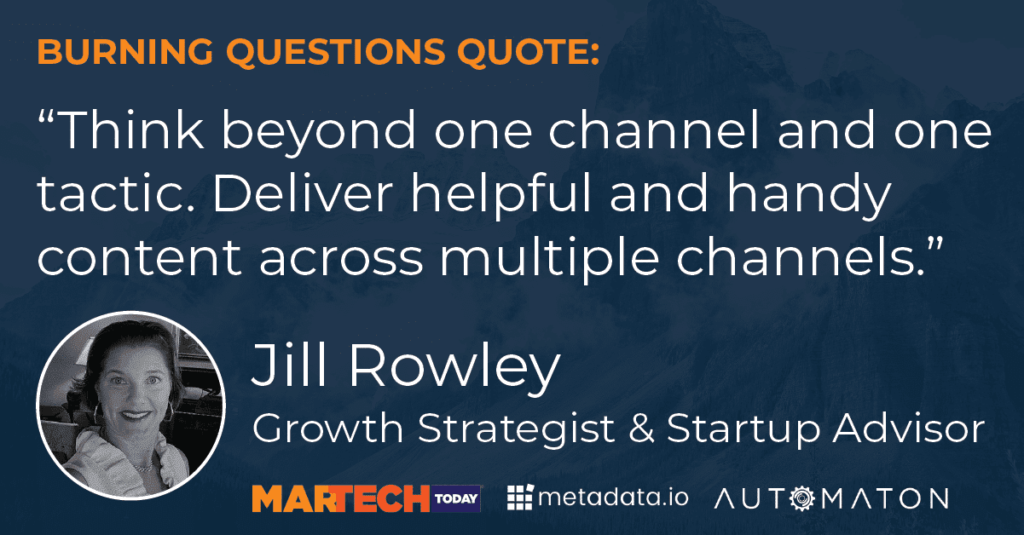
This blog is designed to capture the big points they shared. If you’re interested in watching the webinar in its entirety, watch it here.
Is last touch attribution dead?
Unanimously, the panel agreed that last touch attribution is dead. What seemed like an effective way to acquire the elusive MQL, turned out to be a shortcut to good performance data. By most last touch attribution models, a marketer might think that they should be pummeling their customers with emails, but in fact, an MQL rarely acts as an effective performance indicator. What’s more, we can do better. Although the technology is imperfect, it has evolved allowing marketers to collect the information they need to create more effective attribution models. This allows today’s organizations to capture nonlinear journeys. And in uncertain times, understanding their path is more important than ever. As budgets pull back, organizations need to streamline and reallocate budgets to those things they know work best. The only time last touch attribution is acceptable is when you are an early stage company who has limited resources and collecting something is better than collecting nothing.
Should content be gated or ungated?
The MQL problem lingers on in the gated versus non gated conversation. Where increased form fills may have been interpreted as increased marketer performance, it never ended up becoming a true indicator of performance or, ultimately, revenue. With today’s technology offerings, you can collect information from visitors in other, less intrusive ways that provide a better customer experience. In a world where content is plentiful, gated content just acts as a blocker to engagement with the brand itself. It’s an opportunity for your prospect to move on to a competitor’s content who is ungated. Top of funnel content is rarely directly related to the product itself. It usually focuses on the industry influences or tangential challenges that the buyer faces. Often delayed follow up after forced information collection can leave a bad taste in a users mouth. And if you do have a form, be sure to make the experience excellent. Don’t just slap an uncustomized Marketo form on a web page. Ensure that it is in line with your brand, and collects and pre-fills information if the user has already decided to download a piece you’ve produced.
What simple changes can marketing and sales teams make in how they work together to drive more revenue?
The panel agreed that the most effective way to align marketing and sales is decidedly low tech: talk to each other. While some sales and marketing teams still have legacy frustrations linger, the best way to break down barriers to drive more revenue is through communication. It helps dissolve friction and stress and gives you some incredible ideas on how they can serve their customers better on both sides. Whether it’s being on sales calls directly or asking their sales reps where they are getting pushback in the sales process, marketers are sure to learn a ton from sales when they take the time.
Of course, technology can augment the communication with call recordings. Aggregate them and apply keyword trackers to alert you to when a customer mentions a competitor. Find ways to use this information into a dashboard that summarizes and makes that information consumable. Another way to help align marketing and sales is to have them share KPIs and general pipeline responsibilities. In addition, incorporate the customer success team into this conversation as well. This holistic approach allows for the customer to be at the center of each conversation to ensure you’re aligned across the organization. If you share the pipeline, you’re going to work closely with the sales team. If you own revenue, you have to align with your organization. The relationship between sales, marketing, and customers success, should be a partnership with the customer standing in the center of it. -Jill Rowley
How can we make our demandgen efforts more resilient and diversified?
The best advice we heard from our panelists (summarized) was “don’t freak out.” Making knee jerk reactions before understanding the lay of the land could mean cutting or changing things that will impact your larger and more long term demand gen activities. That being said, make sure you’re doing the following:
- Check your assets and your process. Check your ads, nurtures and evergreen campaigns to make sure they have accurate information in them. Check the workflows and processes to ensure that they are accurate and resilient before things get out of control.
- Differentiation is key. When things get hard, it can be tempting to get conservative with approaches and messages. The reality is that you need to lean into what helps you stand out and amplify it.
- Plan ahead. Don’t wait for something to happen. Have a contingency plan in place before things take a turn. Plan for the good times, and then create models of less optimistic times. Know what you’ll do if you can’t sell anything for three or six months.
- Don’t act, orchestrate. Take your relevant, handy, and helpful content and think across multiple channels to create a full experience for your prospect.
- Don’t virtue signal. If you, as a company can offer help or guidance in a genuine way, do it. If you can’t, don’t lean on platitudes or unhelpful “help”. Consumers can smell bad behavior from a mile away and it will harm, not help, your efforts with prospects and customers.
What new ideas, techniques, technologies are we most excited about in the next year?
The key to good tools in today’s saturated market is high value. Marketers need to look for more value at scale from the partners they choose. Examples like Gong.io, a revenue intelligence platform as well as Alyce, a highly customized gifting platform for brands are two instances of how technology can provide relevant and useful information or experiences to improve both the customer experience and organizational performance. Drift, a conversation platform, has a customizable video offering for sales people to produce customized prospect video. Customized video hasn’t picked up steam yet, so those who use tools like this will stand out. Basic communication channels like SMS text, LinkedIn Messages, Facebook Messaging, Slack and other one-to-one tactics are still getting marketers excited.
Is there a streamlined way to collect Intent Data?
Intent can be a tricky thing to measure. With positive and negative intent difficult to tell apart, you need to find a smarter provider that can distinguish between the two. Context really is key. What they consider a surge or a dip is dictated by context. One way to make sure that your intent data is accurate and useful to the QA it. Ask yourself how was the data collected? is it legitimate? what kind of data is it? When evaluating tools, invest in the type that utilize first party data (like your website) and second party data (with reliable resources like G2, and other clean data sources), and avoid those who partner with less reliable third party data providers to glean insights. Make sure that the intent platform you are using has actionable data. In order for that to be successful, ensure you have workflows in place to deliver those actionable data points to the team members that will benefit from them most. The best way for your teams to succeed is give them the tools to cut through the unavoidable noise on social media with something specific.
Wrapping it Up
We hope that these nuggets of advice will help you build and grow a successful Q2. These are just a few highlights of the larger conversation.
We hope you’ll watch the whole webinar (if you missed it).
In it, you’ll find out if Sara, Adam, G and Jill think that artificial is hip or just hype. Check it out. And if you’re interested in another tool that will help streamline your revenue ops, check out Stack Moxie.

